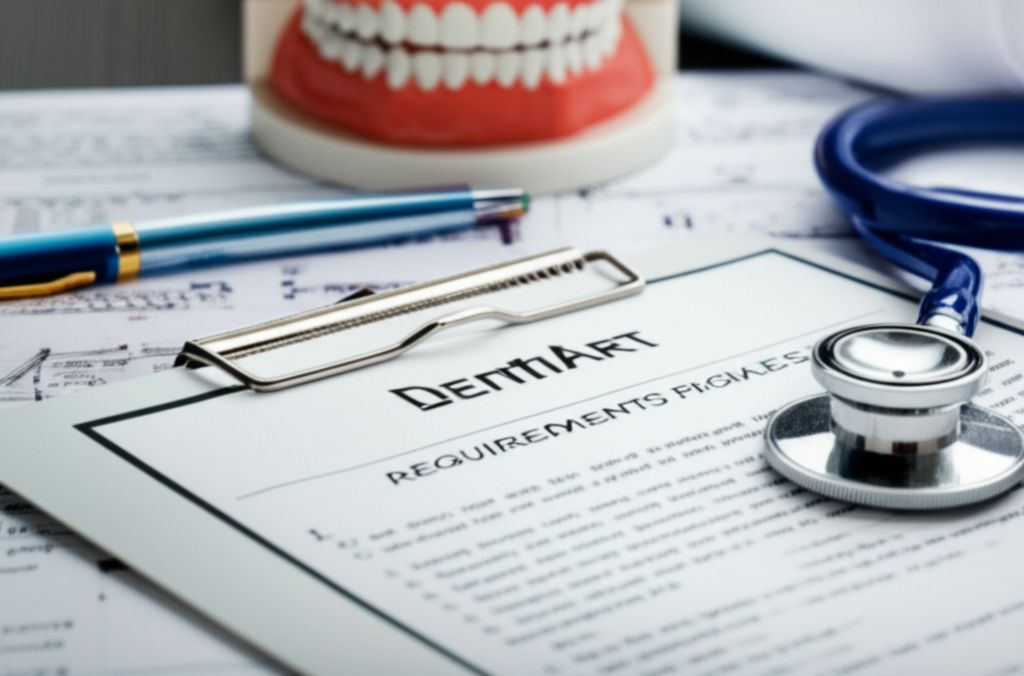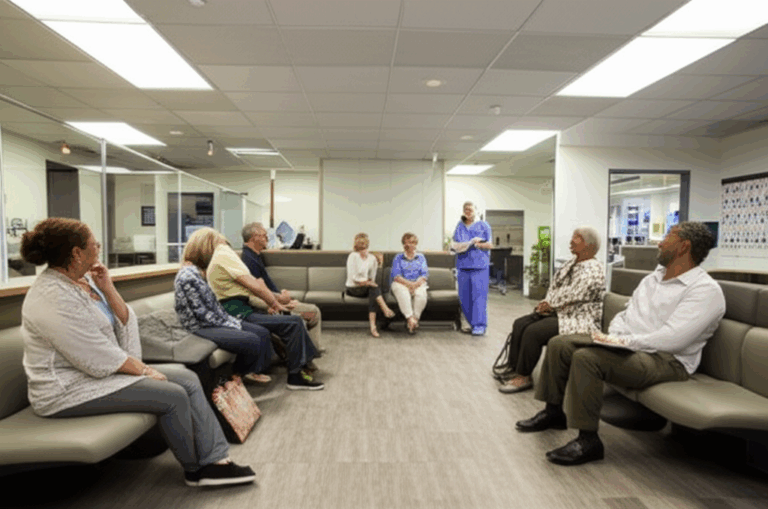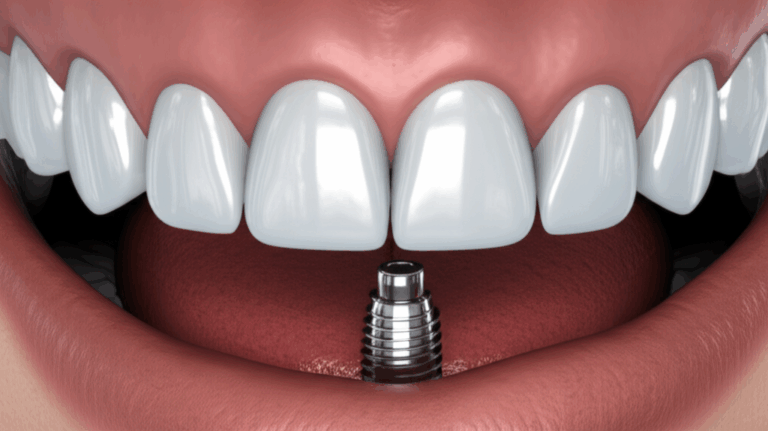
How to Open a Dental Clinic: My Step-by-Step Requirements Guide
Table of Contents
1.1 Crafting Your Dental Clinic Business Plan
1.2 Choosing Your Legal Business Entity
1.3 Dentist Licensing & Professional Credentialing
2.1 Detailed Dental Clinic Startup Cost Estimation
2.2 Securing Financing for Your Dental Practice
3.1 Selecting the Optimal Dental Clinic Location
3.2 Dental Office Design, Build-Out & Permitting
3.3 Critical Dental Equipment & Technology Acquisition
4.1 Building Your Core Dental Clinic Team
4.2 HR Compliance & Payroll Setup
5.1 Regulatory Adherence & Safety Protocols
5.2 Essential Insurance Coverage for Dental Practices
5.3 Establishing Key Practice Services
6.1 Developing Your Initial Patient Acquisition Strategy
7.1 Monitoring Performance & Making Operational Adjustments
7.2 Continuous Professional Development & Practice Expansion
Foundational Planning & Legal Structure
Crafting Your Dental Clinic Business Plan
When I first thought about opening a dental clinic, I learned the most important thing was having a good business plan. Without it, I would have been guessing and hoping for the best. I began by checking out clinics in my area. Who else was out there? What did they do well or not so well? I took notes everywhere—even in coffee shops near clinics.
Then I picked my focus. Would I do family dentistry, cosmetic stuff like veneer, or bigger repair jobs? Picking my focus helped me a lot.
Next was the hard part—money planning. I listed every cost I could think of: dental chairs, fixing up the space, supplies, advertising, and even giving myself a paycheck for the first few slow months. I found a dental clinic budget template to help me make sure I didn’t forget anything. Then I guessed how much I’d make and tried to see when I’d break even. My best tip? Plan as if things cost more and you make a little less—this way, any surprise is a good one.
The business plan wasn’t just for me, either. Banks and possible business partners wanted to see it. It showed I was ready and thinking ahead.
Choosing Your Legal Business Entity
Paperwork and rules aren’t much fun, but you have to deal with them. I had to decide if I wanted to be a sole owner, an LLC, or a corporation. Each way means different stuff about taxes and who gets blamed if something goes wrong. I talked to a lawyer and an accountant before I picked.
Once I chose, I got an EIN (Employer Identification Number), so I could pay people and do my taxes.
Don’t forget to register your business name. I spent way too long coming up with a name that sounded nice and made sense. After picking one, I made sure to get the trademark so nobody could just use my idea later.
Dentist Licensing & Professional Credentialing
The most basic thing a clinic needs is the right license. I got mine from the state dental board, sending in my school records and proof I passed my tests. If you want to write prescriptions, you also need a DEA registration.
To take insurance, you need an NPI (National Provider Identifier). Signing up for insurance providers takes time, so start on that months ahead. If there’s a delay, your opening could be pushed back.
Financial Strategy & Funding Acquisition
Detailed Dental Clinic Startup Cost Estimation
Starting a dental clinic isn’t cheap, but splitting the costs into groups helped me make sense of it all. Here’s what I spent money on:
- Equipment & Technology: Big buys were dental chairs, X-ray gear, computers with practice software, and cleaning machines. Don’t buy cheap stuff here—good gear makes a difference for your patients.
- Real Estate: Renting or buying the place, plus making it fit for a dental office. You’ll need to add plumbing, special wiring, and lots of other changes.
- Starter Supplies & Bills: Gloves, dental material, cleaning products—these add up fast.
- Marketing & Back-up Cash: I knew I wouldn’t be full of patients right away, so I saved up 6-12 months’ worth of living and business bills just in case.
Altogether, I spent about $500,000 to get started. Your cost might be less or more, depending on size and city.
Securing Financing for Your Dental Practice
Unless you’re super lucky, you’ll need to borrow money. I looked at bank loans and SBA loans. Dentists are pretty safe bets for banks, so they liked talking to me.
TIP: SBA loans were a bit cheaper, but took longer. Get ready for a bunch of paperwork—business plan, your own money details, old tax files, and even how you will attract patients.
Some companies that sell dental equipment had their own payment plans, which helped spread out the costs. I put in some of my own money too, to show I was serious.
Location, Design & Essential Equipment
Selecting the Optimal Dental Clinic Location
“Location, location, location” is a saying for a reason. I walked around and checked out each spot—Was there parking? Were there other dentists nearby? Did people walk by a lot? I even checked which side of the street got more sun—good sunlight makes the office feel nice.
I also checked zoning laws to make sure I was allowed to have a dental office there. Try to pick a place near schools or busy centers—kids and their parents might be your first patients.
Dental Office Design, Build-Out & Permitting
Having nice gear and people doesn’t matter if your office set up is bad. I worked with a dental designer to make sure the exam rooms, waiting area, and cleaning area were in smart spots. Good design means less stress and things run smoother.
Building rules are strict. Doors, bathrooms, and entryways all have to be easy for anyone to use. I needed a bunch of permits and inspections, for stuff like sinks, safety, and health rules. If you can, work with a builder who knows dental clinics.
Critical Dental Equipment & Technology Acquisition
The first time I sat in my dental chair, I loved it—it was comfy and easy to keep clean. Good chairs and X-rays are worth it for happy patients. Having a digital X-ray machine meant no waiting, and I could show patients their teeth in seconds.
Cleaning gear and strong infection controls were musts, especially after the pandemic. And I used practice management software for booking, billing, and keeping patient charts. Without it, I would have been lost in paperwork.
If you’re new to lab work, finding a good china dental lab or a digital lab you can trust makes things much easier and less stressful.
Staffing & Human Resources Management
Building Your Core Dental Clinic Team
Your team is your clinic. I started small—one dental assistant, one hygienist, one front desk person. I wanted people who were kind and made patients feel comfortable, as much as those who had fancy resumes.
Explain jobs early. Hygienists focus on deep cleaning; dental assistants help with procedures; the front desk handles patients and sets the mood for your clinic.
HR Compliance & Payroll Setup
Hiring is just one part. I had to make handbooks and rules so everyone knew what to do and what not to do. I first tried to handle payroll myself, then quickly switched to an online payroll service to save time and trouble.
Even for a small group, offering some health insurance, vacation days, and maybe help with school classes helped me keep my best workers.
Both OSHA and HIPAA need staff training—don’t skip this! You could end up with fines, or worse, if people don’t know what’s allowed and safe.
Operational Compliance & Patient Safety
Regulatory Adherence & Safety Protocols
Following rules isn’t just about paperwork; it’s about keeping your team and patients safe. I followed OSHA rules for sharp tools and chemicals, did safety training, and kept things clear and easy to find for my team.
Everything patient-related—files, emails—must be private. I kept information safe with password-protected software and locked cabinets. A data leak is bad news.
I also stuck to CDC rules for cleaning, using the right disinfectants and handling dental waste like old filling mix or expired drugs the right way.
Essential Insurance Coverage for Dental Practices
Insurance feels like just another bill until you need it. Dental malpractice insurance was first. Property and “something went wrong” insurance were next. When a pipe broke in winter, that coverage saved my business. I also made sure my team had worker’s comp in case of accidents.
Establishing Key Practice Services
Making sure the basics worked—water, internet, phones—didn’t seem important until I lost water in the middle of a filling! Pick companies that understand dental offices.
I also made accounts with dental supply companies, so I never ran out of basics. Ordering was automatic as much as possible to save time.
I set up all my computers so the exam rooms and main desk could talk to each other, and used good virus protection to keep patient info safe.
Marketing Your New Dental Clinic & Patient Acquisition
Developing Your Initial Patient Acquisition Strategy
Patients won’t just show up. You need a plan even before you open.
A website brought me most of my first patients. I used simple local keywords in Google so people near me could find the clinic. I also set up my Google business page, which really helped.
Social media and real reviews built trust. I posted simple dental tips and shared happy stories, like reaching our first 100 patients. Every good review brought in more calls.
Getting out in the community, like giving a talk at a local school or joining town groups, got me known and helped calm new patients’ nerves. A small opening party with tours for neighbors got people talking.
If you want to offer more like restorative or cosmetic services, teaming up with a trusted veneer lab can help you give patients more choices.
Post-Opening: Sustaining Growth & Success
Monitoring Performance & Making Operational Adjustments
After those first weeks, I learned to watch how things were going. How many new people came in? Did they come back? My software made reports simple.
If something wasn’t working, like if people weren’t booking follow-up visits, I made small changes—like staying open later some days. Little fixes made a big difference.
Continuous Professional Development & Practice Expansion
Dentistry changes fast. I kept learning, went to workshops, and watched online classes about new stuff in digital dentistry. Learning new things helped me keep patients and offer more treatments.
When things got busier, I added another exam room and hired more people. Sometimes I tried new things, like giving advice over video calls. Investing in myself and the office made business stronger.
Final Thoughts
Opening a dental clinic isn’t quick or easy. It takes patience and planning. For me, good planning, smart spending, and caring about people (and following rules) kept me going, even when things went wrong.
My last advice: don’t try to do it all alone. Find helpers, mentors, and a great team. Taking smart steps and always learning will help you win in this awesome job.
Want to learn more about dental tech or lab partners? Check out digital dental lab for ideas on picking labs and new dental services as you grow your clinic!








